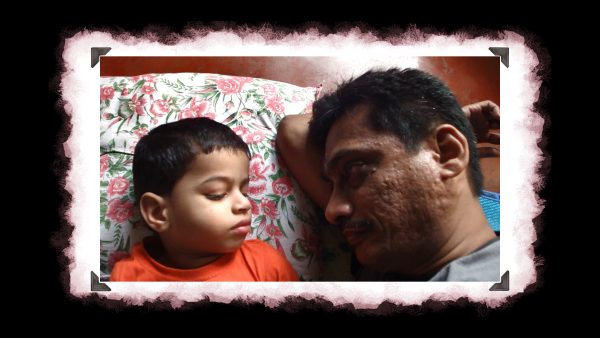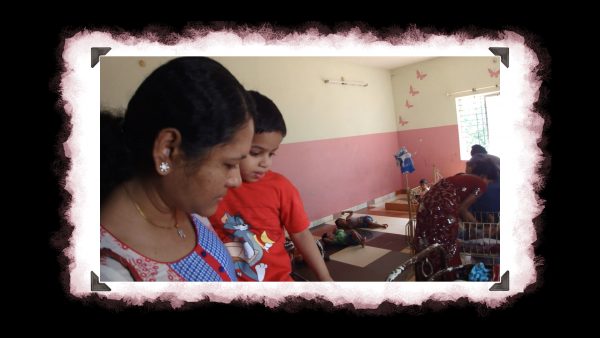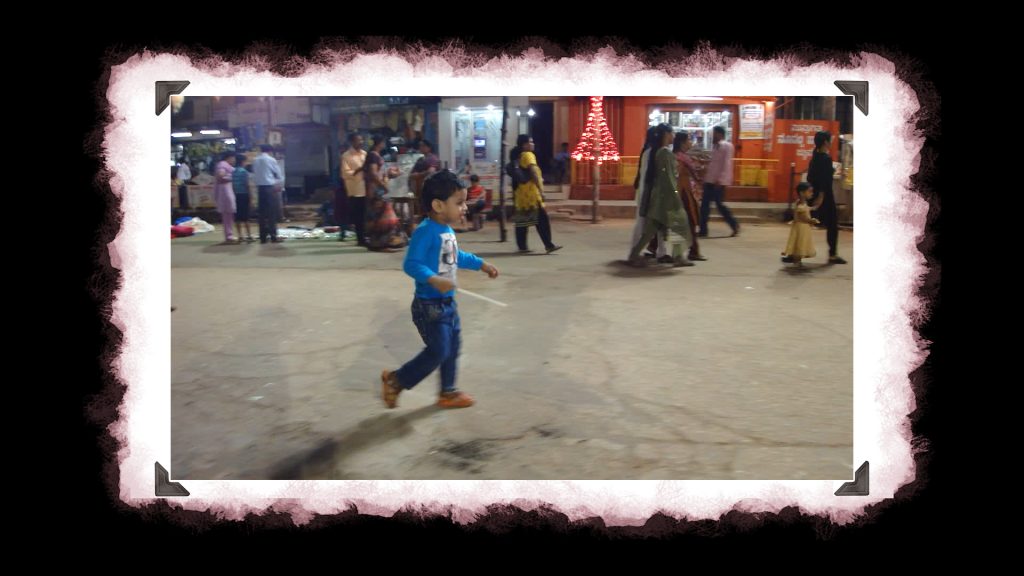We are today far removed from the days when documentaries were seen as works that projected or reflected the ‘objective truth’ of their subjects and the world around us. We are now increasingly conscious of the fact that there are subjective elements embedded in any ‘truth’ being advocated – in a movie or otherwise. Quite frequently, documentaries turn the focus of its camera towards itself, highlighting the reflexive nature of its maker; on such occasions, subjectivity itself becomes the core. A documentary could have an ‘I am telling you things about it’ or an ‘It is telling you things about itself’ attitude on its sleeves. Most often, reflexive documentaries that look inwards have the ‘I am telling you things about myself and it’ approach. R for Roshan’s Childhood is my second long documentary to take such a position, after Miyar House (2011).
While Miyar House has me as the movie maker visiting my ancestral village when our century-old house was being dismantled for the purpose of its reconstruction in a heritage village, R for Roshan’s Childhood is a road trip that my better half, Sushma, and I make to our native places in order to introduce our four-year old son, Roshan, to our extended families. But more than just introducing Roshan to our respective families, it is the journey itself that becomes the area of focus – the time that the three of us spend together navigating this expedition. It essentially means that one is looking at the world from the point of view of Roshan, at least in the movie. It includes being a part of what he negotiates and experiences – in awe and wonder through his encounters with people, places, animals, things and all that is thrown at him by us, his parents. In the documentary, we not only make him meet our respective extended families but also take him to visit the highly relatable children of a child care centre from where his own presence and existence was bestowed upon us.
After my first fiction feature length movie, Suddha (The Cleansing Rites), won the award for Best Indian Film at the 2005 Osean Cinefan Festival of Asian and Arab Films at New Delhi, a screening was held in Bangalore, arranged by the local film directors’ association. Post the screening, an established director who is also an equipment renter, termed the movie as a home video, as Suddha did not utilize artificial lights, background music or make do with any dubbing whatsoever. Well, now he would be advised to see R for Roshan’s Childhood, which consciously uses the home video format for its narration. The camera I used to shoot this documentary fitted neatly into my palm. This allowed me to capture Roshan’s spontaneity at every instant. It was always on standby in my pockets, ever ready for any candid situation that might crop up thanks to Roshan’s instinctive nature.

I also decided to adopt the observatory mode of movie making where the camera becomes a fly on the wall, looking at events unfolding seemingly on their own. This approach mimics the approach of the ‘Direct Cinema’ set of films that have emerged from USA in the late 1960s and early ‘70s – films made by the likes of Maysles Brothers, Robert Drew, and Richard Leacock among others. These directors hardly ever intervened with the events that they were filming, letting them flow as they happened. So the ‘plot’ of the documentary, if I may use the word, or that which is happening on the screen would be determined by the ‘social actors’ (the subjects) themselves as they go about their lives, intervening as they see fit and that which is captured candidly on camera. The interventions that I was indulging in during the shooting of R for Roshan’s Childhood were in my capacity as a father; it would have happened even without the presence of the camera. Therefore, they do blend well with the aesthetics of the movie.
During the shooting, Roshan initially got intrigued by the camera – many times during the filming, he insisted that he see for himself what was being shot of him, as and when it was being shot. He used to get frustrated that he could not do so as the particular camera that I was using did not have a rotatable monitor panel to it. I almost had to open a cinema school for him during the process of making this movie – telling him what a lens is lest he touches it out of curiosity or telling him what facing the camera means so that he could try it out with his favorite teddy bear etc. Some of these interactions are kept in the final edit. Roshan soon took a great liking to the shooting process, almost like duck takes to water. Familiarity soon made him ignore the presence of the camera. He went about his business of grasping life as if he was a seasoned ‘social actor’, aware of the camera but ignoring its presence. We, as parents, wanted him to spend some time with our respective relatives but he would go off-tangent playing with a cat or a toy car, looking out for a bird or an elephant or wanting to catch a fish in the aquarium – Indulging in things that are important to him. They key was to simply let be – a key doctrine in ‘Direct Cinema’ and probably in life itself!

By the time I started editing this documentary, Roshan had grown up a bit – just enough to give me some collaborative suggestions on the edit, colour scheme, point out subtitles typing mistakes and mainly, suggesting the title. The ghosts of ‘Direct Cinema’, too, had been exorcized a bit by then. I did not feel the need to maintain the natural flow of the timeline in the documentary – a mandatory requirement for the ‘Direct Cinema’ films, keeping in tune with the minimal intrusion policy that their directors had adopted. R for Roshan’s Childhood happily wears on its sleeves the flashback mode to narrate its road journey – jumping back time and returning to the present at a later stage – something a conventional ‘Direct Cinema’ documentary would normally avoid doing. At a personal level, this movie is primarily made so that if at all Roshan wants the option to look back at his past at any given point of time in his life; it is available to him in this form. But if the documentary also has a larger purpose that would appeal to a wider audience, then so be it.
But it took me quite a while to get into the editing mode for this documentary. There was always this nagging doubt running behind the mind – just how relevant is this personal journey for the larger public? I remember harbouring such thoughts while making Miyar House too, which resulted in the delaying of its editing for quite some time before clarity finally struck. So, what could be considered as the thematic universality of R for Roshan’s Childhood? That it professes a certain being of openness in letting things, events and people be themselves; as is reflected in the characters and as manifested in the form used? Or specifically that it hints for the need for a certain degree of forthrightness amongst parents as they assume the parenthood of a non-biological child? I would leave that to the audience.
Chilean director Patricio Guzman had once famously said, “A country without documentaries is like a family without a photo album.” I would like to subvert this phrase a bit – “A family – especially a movie-making family – without a reflexive documentary would be like a country without a photo album”!



The note made me ponder a bit.
In what ways?